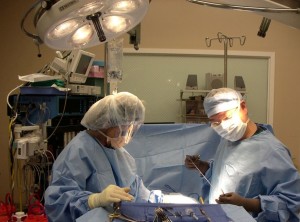Another public forum question which I will attempt to answer.
Almost total Voluma absorption after only 5 weeks? What caused and does that mean hyaluronic products a no-go for me?
I had 1 vial of voluma–split between both facial cheeks and eye areas, and one perlayne split between both marionette areas 5 weeks ago and already the sunkeness around my eyes is returning–voluma should last at least a year–any suggestions as to why this happened? Does this mean I’m not a good candidate for any hyaluronic acid products? My injections performed by a very experienced plastic surgeon–little bruising, redness or after discomfort; immediate happy results. )-: thank you!
My Voluma Answer:
I will attempt to answer your question from a community discussion standpoint. Please see your own doctors in person for personalized medical advice.
Much of what an injector does with fillers is an art, thus the amount, the products, the location, and the method of placement is all different.
I am currently mostly a cannula injector when it comes to Juvederm Voluma and I still prefer the threading methods. And for me, Voluma is not the only filler I use in the cheek. I have found myself layering with Juvederm Ultra Plus XC, and also Belotero when needed for additional superficial shaping. I used to inject this differently – using droplets of filler. But my style changes from time to time and from patient to patient. Thus I am speaking only from my experience, and my methods and thought process could be completely different from your plastic surgeon. Please keep in contact with your plastic surgeon. I think he/she would appreciate an open dialogue. I am answering this question as a public academic exercise for myself to see how my answer compares to others and to personally build up information sheets for my own patients. Thank you for giving me the opportunity to participate.
Your comment about Voluma disappearing in about a month’s period of time is a comment I hear from my own patients in my practice. Much of the time, it isn’t because they were fast metabolizers of Juvederm Voluma. But most of the time it is due to at least these four factors:
1. The Juvederm Voluma softened over that time and lost some of it’s original projection. This almost always happens in what I’ve seen. Then the Voluma spreads out and becomes more of a diffuse appearance – more rounded / less angular. this is what I mean from the title – the Juvederm Voluma evolves over the first few weeks.
2. The Juvederm Voluma, with gravity, sometimes shifts downwards. Thus, it might get somewhat “lost” in the hollows of the cheek. This is what I also mean from the title – the Juvederm Voluma evolves over the first few weeks.
3. Some of the original swelling has gone down from the procedure itself (needles/cannulas/massaging), and thus it appears that some of the material is lost – but in fact the only thing lost is the swelling.
4. Our patients sometimes gets used to the new look and had pleasantly “forgotten” the “before” look. Thus the changes don’t seem as dramatic.
With all those four factors, additional Juvederm Voluma injections might solve the problem. I have found that one syringe is useful in youthful patients with tight skin over their cheek bones. But for most of my other patients, two syringes of Voluma helps me achieve the look (and duration) I want for my patients. It is not uncommon for me to consider 3 or 4 syringes.
You also mentioned in your question about Perlane. The active ingredient in both Voluma and Perlane is hyaluronic acid. If the Perlane results are still evident, this means that you are unlikely to be a rapid metabolizer of hyaluronic acid. It sounds like from your question that you are satisfied with your Perlane results. This means to me, even more so, that another syringe of Voluma might be your best solution before thinking of switching to a different material such as Radiesse or giving up on future Voluma injections.
Calvin Lee, MD
Modesto, California Juvederm Voluma Injections
Disclaimer: some of the discussion above involves off-label FDA usage of fillers. And none of what I mentioned above is meant to be personalized medical advice. I am just discussing a hypothetical situation posed by a person I have not examined. Without a personalized examination, I am only guessing at possible solutions which I present above. I am also assuming that the mention of 1 “vial” = 1 syringe.

